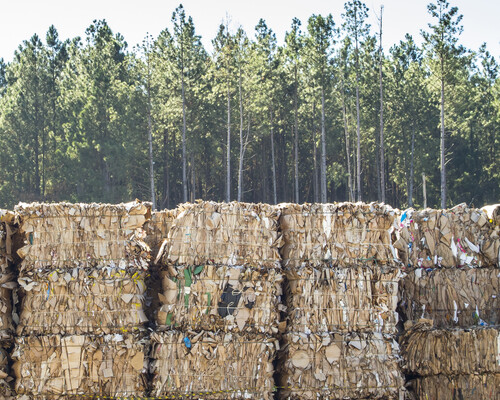Facts About Energy Use and the Paper Industry
Advancing Sustainability Through Energy Efficiency
The paper industry plays a vital role in our daily lives. Paper is all around us in our homes, schools and offices. It’s a product to feel good about because the industry has taken steps to advance sustainability through energy efficiency.
Understanding Energy Consumption in the Paper Industry
Purchased energy is the 3rd largest operating cost for the paper and wood products industry.
Purchased energy is when a company or person gets their electricity, heat, cooling, etc. from an outside source. For our industry, it includes all fuels, electricity and steam purchased from other providers.
One of our industry’s fundamental energy management goals has been to increase energy efficiency to use less energy overall.
For starters, it helps to know the stages involved in paper production. Let's break it down:
- Sourcing Raw Materials: The paper industry uses wood fiber from sustainably managed forests and recycled paper fibers to make new products.
- Pulp and Paper Manufacturing: Making pulp and paper involves several energy-intensive processes, such as pulping and drying. Today, advances in technology have led to substantial energy efficiency improvements.
Does the Paper Industry Use A Lot of Energy?

Energy consumption is part of making paper. The industry is continuously working to increase energy efficiency.
In 2020, AF&PA member pulp and paper mills self-generated 58% of the electricity needed to power their mills. Primarily through use of biomass energy.
New technologies and innovation have significantly improved energy consumption and helped the industry advance its sustainability goals.
Advances in Energy Efficiency by Paper Industry
The forest products industry was one of the first manufacturing industries to set quantifiable sustainability goals. Improving energy efficiency was one of those goals.
AF&PA members surpassed their goal for energy efficiency by reducing purchased energy by more than 13% between 2005 and 2020.

Here are some notable initiatives our industry took to reduce our energy use:
- Investing to upgrade equipment used in manufacturing operations. Things like upgrading drying sections and digesters.
- Replacing energy equipment with newer, more efficient ones that use cleaner fuel sources.
- Using technologies such as combined heat and power, which produce electricity and heat from a single energy source.
- Using renewable energy, including biomass. This is left over materials from the manufacturing process like tree bark, saw dust and liquid biomass.
- Switching to LED lighting to reduce electricity consumption.
See What’s Next for Our Sustainability Goals!
AF&PA has 5 quantifiable sustainability goals that the industry aims to meet by 2030. Better Practices, Better Planet 2030 is a voluntary industry initiative that builds on decades of success to advance sustainable products for a sustainable future.
- Reduce GHG emissions by 50% by 2030
- Advance a circular value chain through the production of renewable and recyclable products
- Advance more resilient U.S. forests
Explore How the Forest Products Industry is Advancing Sustainability



